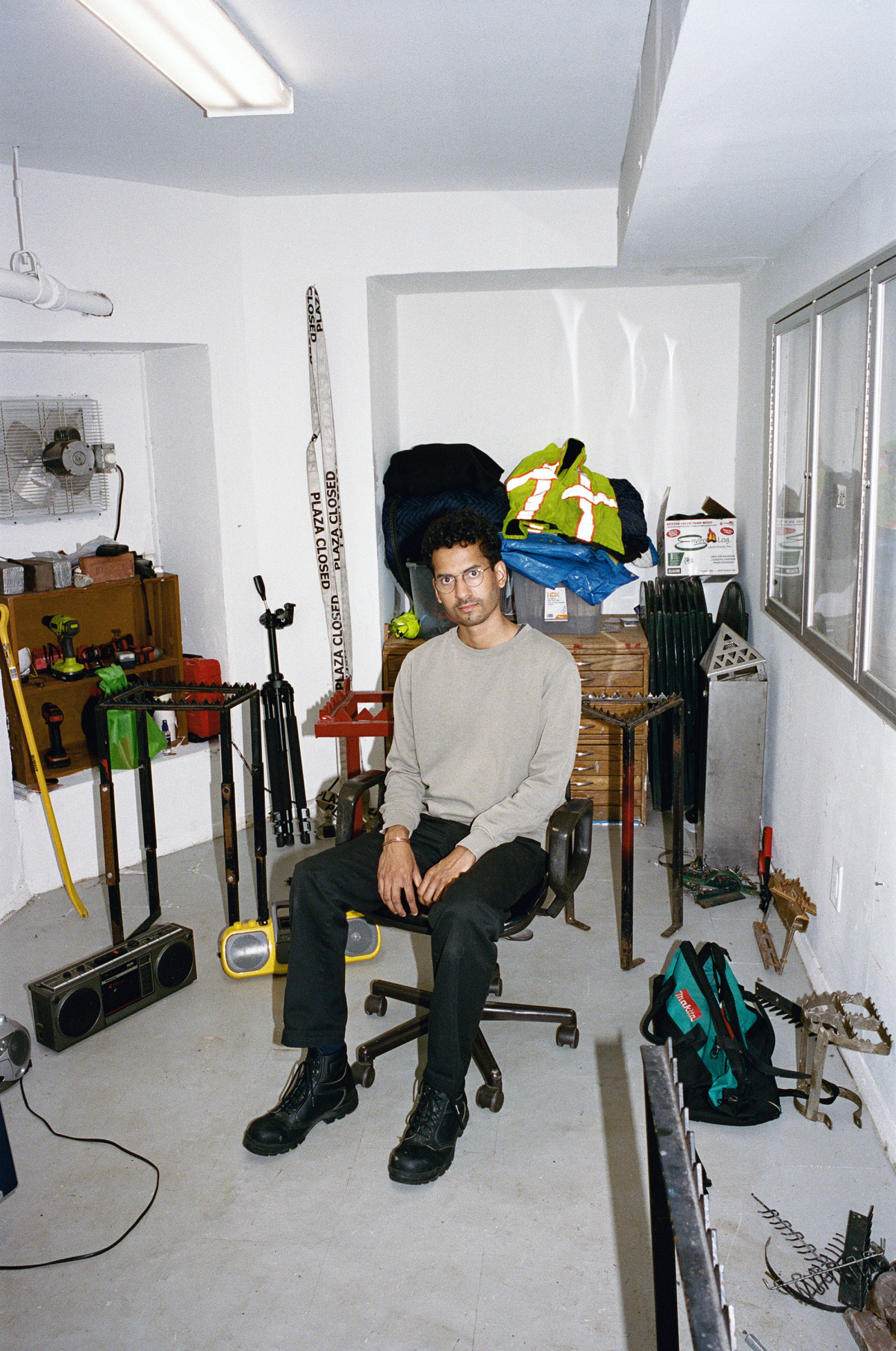
AGE: 30
BASED: New York
The fall of 2011 was a watershed moment for David L. Johnson. A few weeks into his first year at Cooper Union, the Occupy Wall Street movement took root in Zuccotti Park, just two miles away from the school’s East Village campus. Less than two months later, Cooper announced it would no longer offer free tuition, which it had done since 1859. Months of student protests ensued.
Gates, the earliest work the now-30-year-old artist has documented on his website, was made in the aftermath of this period—a moment when art’s relevance to activism was being tested in real time. One evening, Johnson arrived at Tompkins Square Park to find it shuttered, part of a wave of premature closures the NYPD and Parks Department unleashed on public spaces post-Occupy. He began rearranging the sectional fences blocking access to the park into a series of absurd positions—a ballet of misbehaving barricades.
Obstructions of all sizes—from planters preventing access to what could be shelter to property line plaques that void “squatter’s rights”—have proven fruitful material for the native New Yorker ever since. In his best-known series, “Loiter,” Johnson extracts the spikes fixed onto stand pipes to preclude their use as seats. Divorced from their destiny, these fragments of hostile architecture get afterlives in environments like the Palais de Tokyo or Frieze London, where they become enmeshed in a no less fraught web of aestheticization and monetization. But for the artist, it’s their absence that looms larger. “If someone uses the standpipe as a place to sit,” Johnson says, “that’s the artwork doing its thing.”
An upcoming show at Fanta in Milan will see Johnson circling back to the socio-spatial collateral of Occupy Wall Street. The artist sees each of his interventions as ongoing, a reflection of a lifetime spent observing his hometown and its long tradition of subverting imposed frameworks. “I’m also interested in pointing to all of the other people who are involved in these types of actions,” he concludes. “It’s part of a larger series of gestures—and a larger history of refusal.”










 in your life?
in your life?

